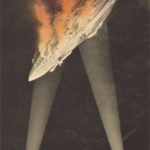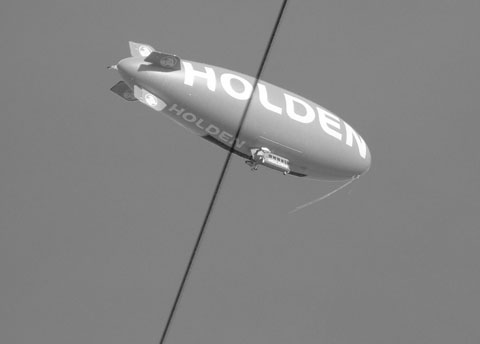
According to David Oliver’s Hendon Aerodrome,
International tension remained high during the Whitsun weekend [30-31 May] of 1914, when the country was plunged into a Zeppelin scare that resulted in severe civil flying restrictions.1
As I’ve never come across this mystery aircraft panic before — a not unknown occurrence! — I naturally got very excited, wrote down a note to myself to look into it, and just as naturally forgot all about it. Now that I’ve rediscovered my note and tried to find out more, I’ve worked out why I’ve not heard of it before: because it didn’t happen — or rather, it had already happened.
As I quickly found, there’s nothing in the press to indicate that there was any particular Zeppelin fear or anxiety in May or June 1914. There was one potential trigger to be found in reports of the proving flights of the new naval Zeppelin L3: it first set a new airship altitude record of 10,250 feet and then left on a 36 hour flight.2 And there were some flying restrictions in this period, minor amendments made on 25 May to the existing regulations such as the addition of ‘”North Killinghome Haven” to the list of prohibited areas’.3 But neither flight nor regulation seem to have excited much interest in the press.
So I returned to Oliver and read on for more clues:
However, Grahame-White had previously invited the French long-distance record breaker, Marcel Brindejonc des Moulinais, to take part in the Whit Sunday meeting at the London Aerodrome on 1 June. The intrepid airman flew direct from Bremen in Germany to Hendon in an Etrich monoplane and promptly won the thirty-mile cross-country Giesler Trophy Race. However, the Royal Aero Club refused to ratify his victory citing the fact that he had contravened the government’s restrictions on overseas flights and should therefore be disqualified. Following a bitter dispute with Royal Aero Club officials, both Grahame-White and Richard Gates resigned from the Club and declared Brindejonc des Moulinais the rightful winner.4
This allowed me to work out what was going on, as these events didn’t take place at Whitsun 1914, but at Whitsun 1913. Here’s Flight‘s commentary in October 1913, after the matter became public:
As a matter of sentiment it was certainly felt at the time that the Club might have shown a little more leniency to M. Brindejonc des Moulinais, and have imposed a less drastic penalty than it did. On the other hand, it must not be lost to sight that at that time — in May last — there was considerable public outcry about flying over populous districts, and sternly restrictive legislation was being demanded. It was doubtless this fact that the Club had in mind when it took the action which is now the subject of so much acrimonious discussion, and from that point of view it is possible to acquit the Club of any considered severity of an undue character.5
That is, the ‘Zeppelin scare’ Oliver refers to is the 1913 phantom airship panic, and the ‘severe civil flying restrictions’ was the Aerial Navigation Act 1913, which for the first time defined British airspace and directed foreign aviators to enter it at designated stretches of coastline and then to immediately land and report to authorities (Brindejonc des Moulinais had the misfortune of being the first to fall foul of the new law).6 That Oliver says that Whit Sunday was on 1 June is another clue, as that was true in 1913 but not 1914. But it’s not just a simple typo, as this section is preceded by the loss of Gustav Hamel over the Channel, on 23 May 1914, and is followed by the Aerial Derby, on 6 June 1914. Oliver’s book is generally very good; here’s he just got his chronology wrong, that’s all.7 There but for the grace of etc, but it does mean that one potential airship panic must unfortunately be written off.
Image source: flyingmachines.ru
![]() This work is licensed under a Creative Commons Attribution-NonCommercial-NoDerivatives 4.0 International License.
Permissions beyond the scope of this license may be available at http://airminded.org/copyright/.
This work is licensed under a Creative Commons Attribution-NonCommercial-NoDerivatives 4.0 International License.
Permissions beyond the scope of this license may be available at http://airminded.org/copyright/.
- David Oliver, Hendon Aerodrome: A History (Shrewsbury: Airlife, 1994), 25-26. [↩]
- Western Daily Press (Bristol), 18 May 1914, 3; Belfast Evening Telegraph, 30 May 1914, 4. [↩]
- Flight, 12 June 1914, 624. [↩]
- Oliver, Hendon Aerodrome, 26, 28. [↩]
- Flight, 11 October 1913, 1110. The panic was actually largely over before May. [↩]
- Dorthe Gert Simonsen, ‘Island in the air: powered aircraft and the early formation of British airspace’, Technology and Culture 59, no. 3 (2018): 590–619. [↩]
- Though I should also add that it seems that Brindejonc des Moulinais was flying a Morane-Saulnier, as illustrated above, not an Etrich: see Flight, 17 May 1913, 527. [↩]




